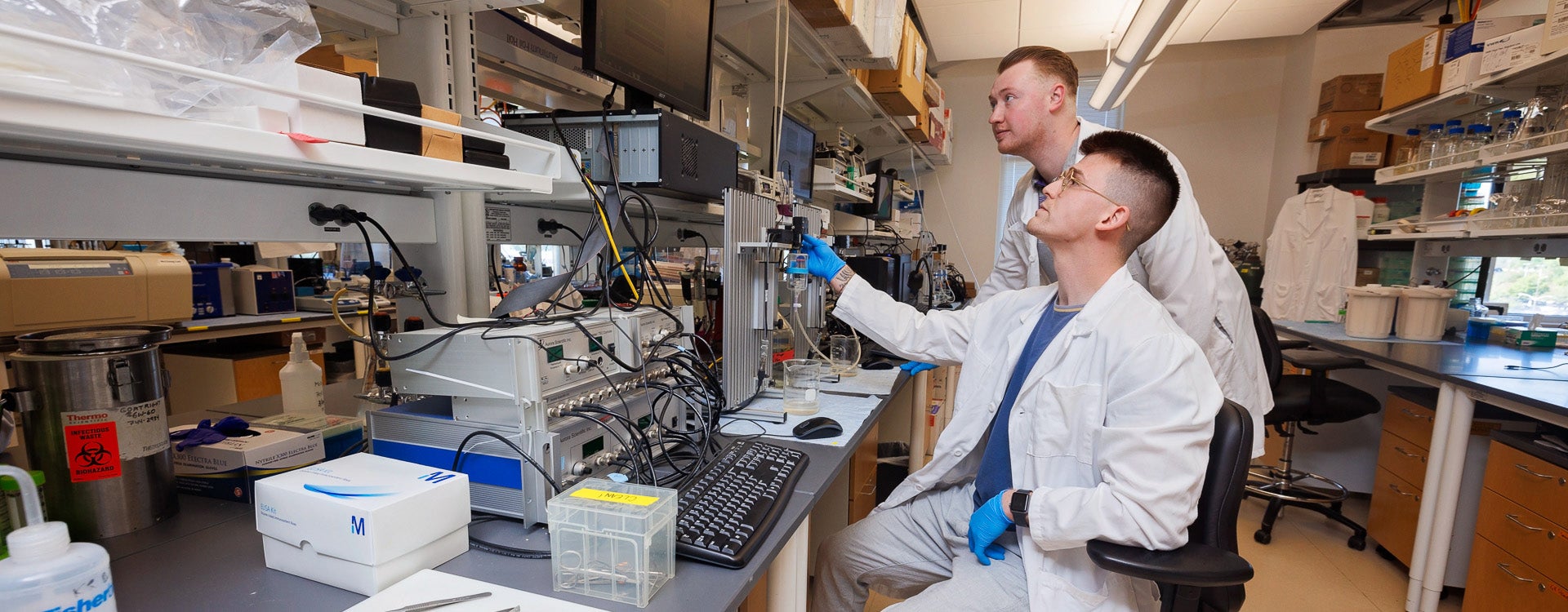Life-changing research: 5 facts about the East Carolina Diabetes and Obesity Institute
What once started as a virtual institute more than 20 years ago has transcended into the East Carolina Diabetes and Obesity Institute (ECDOI), a unique interdisciplinary research facility that is on its way to becoming a top biomedical research institute in the state of North Carolina.
Located on East Carolina University’s Health Sciences Campus, the institute partners with faculty and students from across a wide range of multidisciplinary backgrounds.
Darrell Neufer has served as ECDOI’s director since November 2009. He also serves as a professor in the Brody School of Medicine’s departments of physiology and biochemistry and molecular biology and in an adjunct appointment in the Department of Kinesiology.
Here are five things to know about the institute:
1. ECDOI’s research is extensive
ECDOI was originally called the Metabolic Institute where the sole area of focus in research was metabolism. Over time, ECDOI has advanced its research pursuits to not only include metabolic research, but also that of skeletal muscle biology, vascular muscle disease and exercise physiology — to name a few.
“In addition to diabetes and obesity, we really are a research institute that studies diseases that are associated with metabolism or disorders of metabolism. That includes cancer, lipid metabolism, neurobiology — in the study of eating behavior or activity behavior — and even some aspects of reproductive biology,” Neufer said.
2. Local and national impact
Eastern North Carolina is a part of what is called the “Stroke Belt.” According to research conducted by the National Heart Lung and Blood Institute in the 1980s, 11 states in the southeastern United States were recognized to have a higher stroke mortality rate than the rest of the country.
Over the past 10 years, the institute has led numerous research endeavors to better understand the nature of metabolic diseases and make a positive impact in the future of tackling these high mortality rates.
“We are striving to be a nationally recognized biomedical research institute. Our contemporaries are working towards the same goals which are to figure out ways to better prevent and treat disease,” Neufer said.
3. Rapid growth
The East Carolina Heart Institute building was built in 2011, however, the top floor of the building was not finished for ECDOI to take occupancy until January 2014.
East Carolina University made a significant investment to complete the fourth floor and help establish the research institute.
“ECU put the money in to finish out the floor and decided it was going to be the home for the Diabetes and Obesity Institute. It was the first time that the university had committed to putting faculty and researchers into a space that wasn’t departmental based, it was based on research discipline,” Neufer said.
After ECU’s initial investment in the space, the ECDOI took off and has grown significantly over the past 10 years.
“When we took occupancy in January 2014, we moved in with 14 faculty with about $1.5 million per year in National Institute of Health (NIH) funding. Within 5 years, we had grown to over $5 million per year in NIH funding. And we’re now over $6 million per year in funding, just on the floor. That is not including the research we help support in other departments around campus,” Neufer said.
4. Multidisciplinary opportunities
Speaking of the institute’s building design, a unique aspect of the institute lies in its architectural layout. When creating a design plan, heavy emphasis was placed on creating collaborative opportunities across many different educational backgrounds.
The institute features an open-floor layout with 20 double-sided lab benches, 24 specialty labs, and office space that includes microwaves, coffee pots, and cubicles grouped into small hubs that foster conversation while working.
“The thought was that if you put smart people together that are working in a related area that come from different backgrounds and disciplines, you will foster new ideas,” Neufer said5
5. Current research
Multiple research endeavors are taking place constantly at the institute in a variety of different research areas, with new grants and publications being released every month.
Recently funded projects focus on identifying novel therapies to treat peripheral artery disease, the impact of exercise during pregnancy on childhood obesity risk, and the potential effect of “workaholism” on the likelihood of developing insulin resistance.
The Institute is also preparing future generations of researchers using innovative teaching approaches. Kelsey Fisher-Wellman teaches a semester-long course on mitochondrial bioenergetics that combines theory with an actual research project. At the end of the semester, the student trainees publish the results they find. A remarkably short time period to produce published research.
Interested in keeping up with the ECDOI? Follow ECDOI on Twitter and Facebook to stay up to date with all of their latest publications.

Researchers in the East Carolina Diabetes and Obesity Institute tackle not only metabolic research, but research involving skeletal muscle biology, vascular muscle disease, exercise physiology and more. (ECU photo by Cliff Hollis)